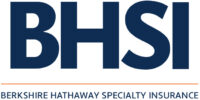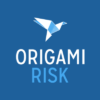Exchange – Belrim Prize Paper: Measuring and understanding the level of safety/risk culture in order to improve it
This event already took place. You cannot register for a past event.
More than 30 years after the first use of the concept of safety culture by the AIEA (1991), experts and researchers agree that the performance of a safety management system is depending on the level of organizational safety culture. If this concept is continuously considered for explaining the performance or the shortcomings of a safety management system, there are however curiously relatively few largely admitted indicators allowing to quantify the level of safety culture and to identify clear enablers allowing to monitor and to improve the level of safety culture.
Which is our current level of safety culture ? Which are the enabling factors that explain our level of safety or risk culture ? Which primary action plan is meaningful in order to increase significantly our level of safety culture in a short, middle and long term perspective respectively ?
This exchange presents the results from an university doctoral research focused on the development of a generic tool able to measure the level of safety culture in an High-Reliability Organization (HRO) and on the identification of explanatory and enabling factors allowing for an increase of this (level of ) culture.
This research is essentially based on key theoretical models such as the ones proposed by Cooper (2002) or Hollnagel (2003, 2006) and integrates them to a largely accepted reference model for performance and quality management, the EFQM excellence model (2013). We highlight mainly the roles played by the nature of the leadership, the human resources as key dominating resources and the quality of partnerships/partnering , coupled with the completeness of the processes, on the increase in the level of organizational safety level.
The main advantage of the tool and the results that are presented during this exchange is their adaptability to different risk approaches (health and safety at work, financial risk, environmental risk, business continuity, …) and to different types of organizations (HROs but also SMEs, public organizations, not-for-profit organizations, …).
Marius Kamto won the BELRIM Prize for his PhD paper on this topic. Professor Didier Van Caillie of the ULg was his promotor.






